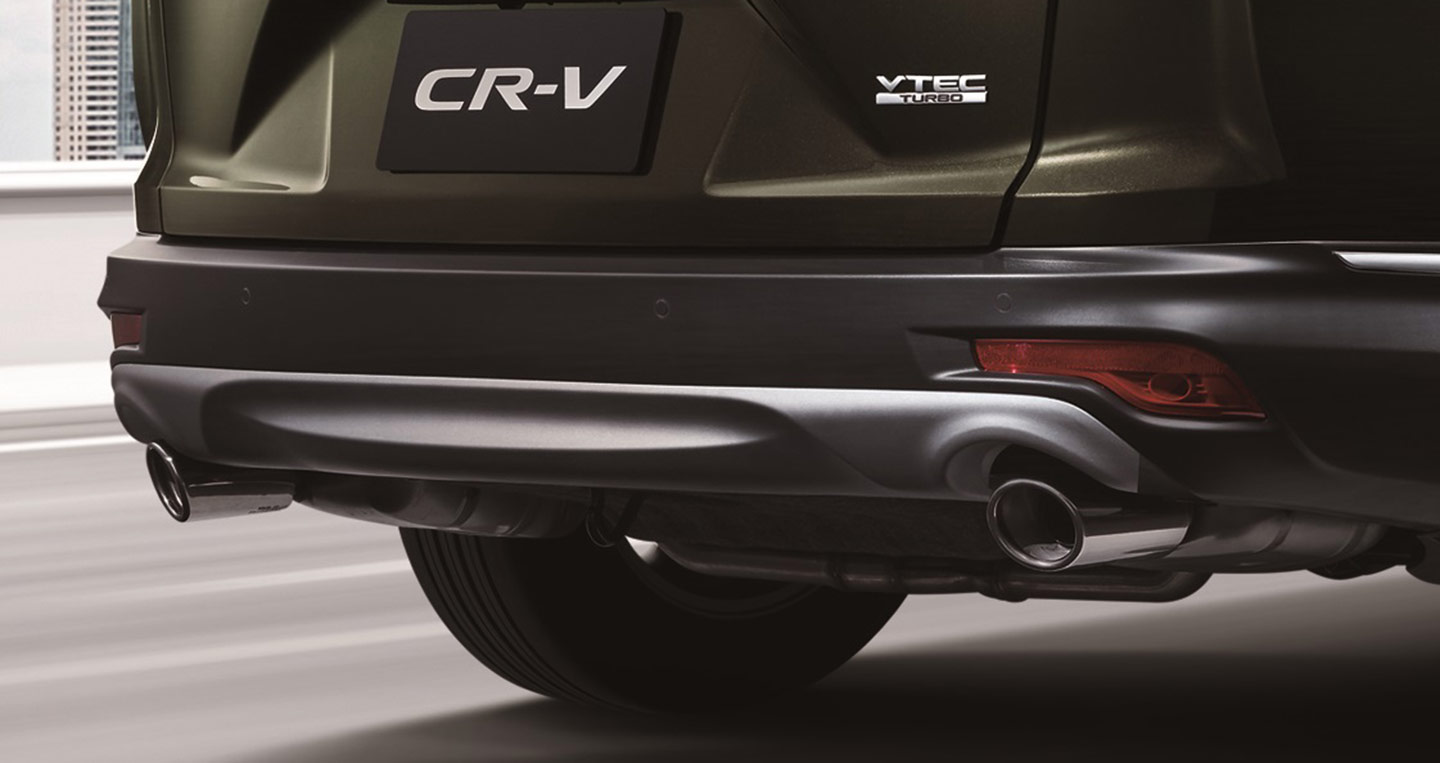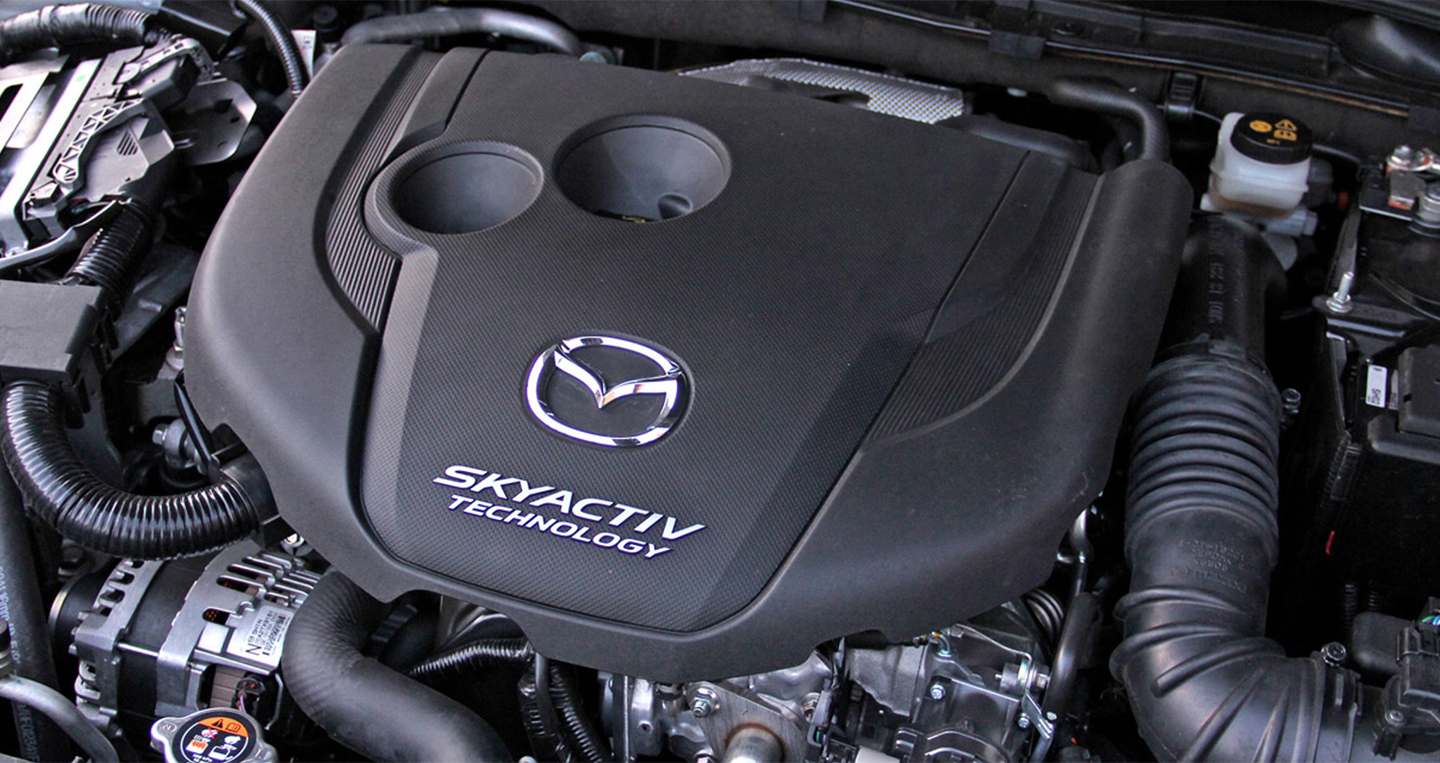Honda CR-V uses the new 1.5 Turbo VTEC engine with a power of 188 horsepower at 5,600 rpm and a maximum torque of 240Nm.
Mazda CX-5 uses the 2.0 Skyactiv G engine with a power of 162 horsepower at 6000 rpm, 210Nm or 2.5L with a power of 192 horsepower, 257Nm.
With the new turbocharged engine for the CR-V, Honda hopes to make a breakthrough for the next generation of cars, represented by the Civic and CR-V. The reduction in engine displacement to achieve higher performance of Honda is addressed by using the Turbocharger, creating slightly more power than the previous generation 2.4L engine.
 With the new turbocharged engine for the CR-V, Honda hopes to make a breakthrough for the next generation of cars
With the new turbocharged engine for the CR-V, Honda hopes to make a breakthrough for the next generation of cars
Different from Honda’s approach, Mazda does not use turbocharging, but increases the compression ratio in the engine. The Skyactiv G generation of Mazda applies many technologies to overcome the barrier that is detonation in the engine with a high compression ratio.
In fact, using a turbocharger or a high compression ratio in the engine both aim to increase the pressure in the combustion chamber. When the combustion chamber pressure increases, the same amount of fuel can generate more power, and at the same time reduce fuel consumption.
To analyze further the performance of a turbocharged engine, we can refer to the formula for calculating the equivalent compression ratio with the boost pressure on an engine with the same displacement.
Effective Compression = ((Boost PSI / 14.7) + 1) * Current Static Compression Ratio
(Effective Compression: Compression Performance
Boost PSI: Turbocharge pressure measured in PSI
Current Static Compression Ratio: Compression Ratio on the turbocharged engine)
Or simply access the website and use the online calculator: http://www.gtsparkplugs.com/EffectiveCompressionCalc.html
With this preliminary calculation tool. If we input the data based on 2 engines with the same displacement, for example using the specification of the Honda 1.5 Turbo VTEC engine, we have a compression ratio of 10.6 and a turbo pressure of 16 psi. The indicated result is 22.88.
The number 22.88 here is understood as the compression ratio that a naturally aspirated 1.5L engine needs to achieve the performance of the Honda 1.5 Turbo VTEC engine when the turbo is running at maximum speed.
Compared to the current world record score of the Skyactive technology, which is 14.0 or 18.0 in the future, it is still a distant figure. So why does Mazda still follow the path of high compression ratio technology while Honda switches to using Turbocharging?
Each engine manufacturing technology has its limitations. With a turbocharged engine, the phenomenon of slow turbo rotation (turbo lag) is constantly improved by automakers to eliminate the big power difference between the turbo acceleration period. And many car manufacturers are switching to using Turbocharger engines.
Compared to a turbocharged engine that is weak at low speeds and strong at high speeds, a high compression ratio engine will provide power from low speeds, creating a lively driving experience at low speeds. However, at high speeds, it will be less powerful than a turbocharged engine with the same displacement.
An important factor to consider when comparing the two engines above is our fuel – gasoline is quite unstable in terms of quality. Has the first-generation Skyactiv engine on the Mazda3 (before 2015, faced with the knocking barrier when using a compression ratio of 14.0 in the Vietnamese market) had to be replaced with an engine with a lower compression ratio of 13.0 in order to use our fuel without worrying about the “goldfish” error message? A lower compression ratio means lower engine performance, which goes against the principle of “very high compression ratio” of Skyactive.
 Mazda is advantaged when offering a 2.5 engine option with more power and torque than Honda
Mazda is advantaged when offering a 2.5 engine option with more power and torque than Honda
It would be too early and superficial to say that the Honda CRV engine is superior to the Skyactiv G engine installed on the new CX-5. However, it can be said that the Turbo engine on Honda will provide a more sporty driving feel compared to the 2.0 Skyactiv G engine (due to the power and torque difference and the characteristics of the Turbo engine), and it can be believed that the 1.5 engine will consume less fuel than the 2.0 engine.
However, Mazda is advantaged when offering a 2.5 engine option with more power and torque than Honda, which creates an opportunity for Mazda customers to choose the engine according to their needs. But to have the same acceleration feel as the CR-V, CX-5 users will have to spend extra on fuel due to the larger displacement.
Automakers may use engines with different displacements or different technologies, and they may also be similar, but in Vietnam, the engine is not the first factor for Vietnamese people to make a car purchase decision. New technologies and engine changes all require time to prove. A powerful and fuel-efficient engine will not have long-term benefits if it lacks reliability.
Gaz69 (forum.autodaily.vn)








































